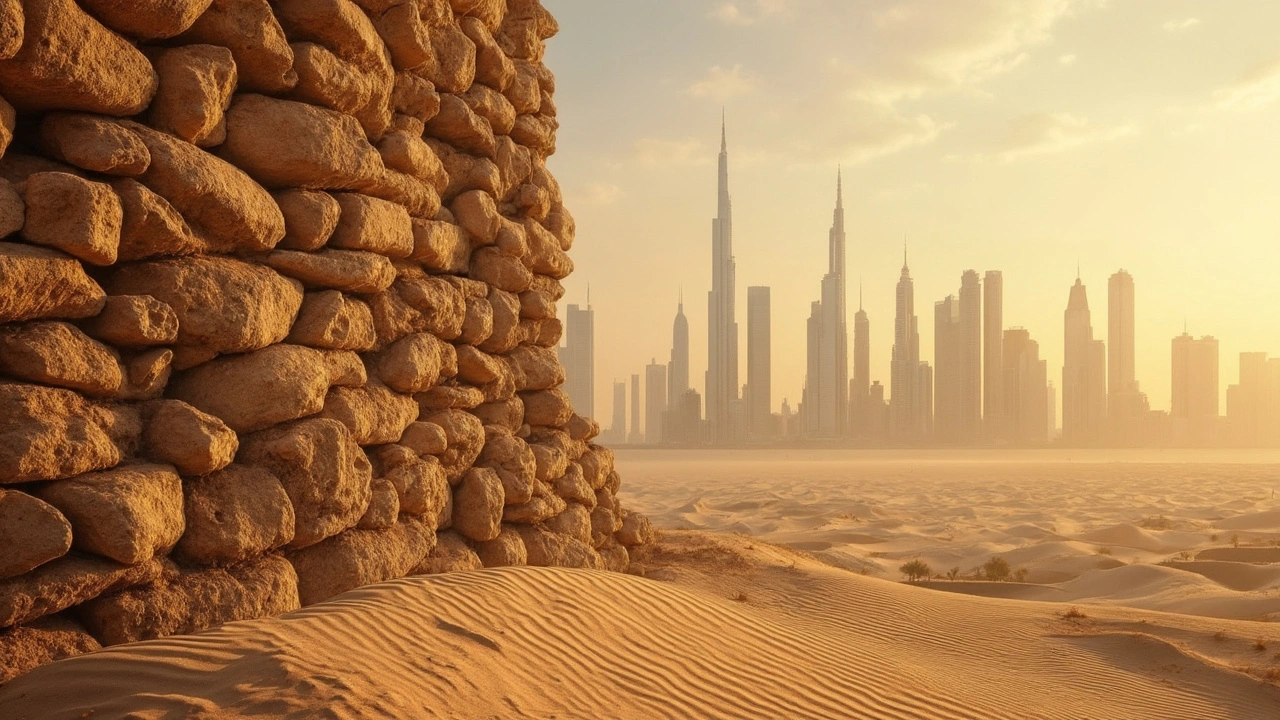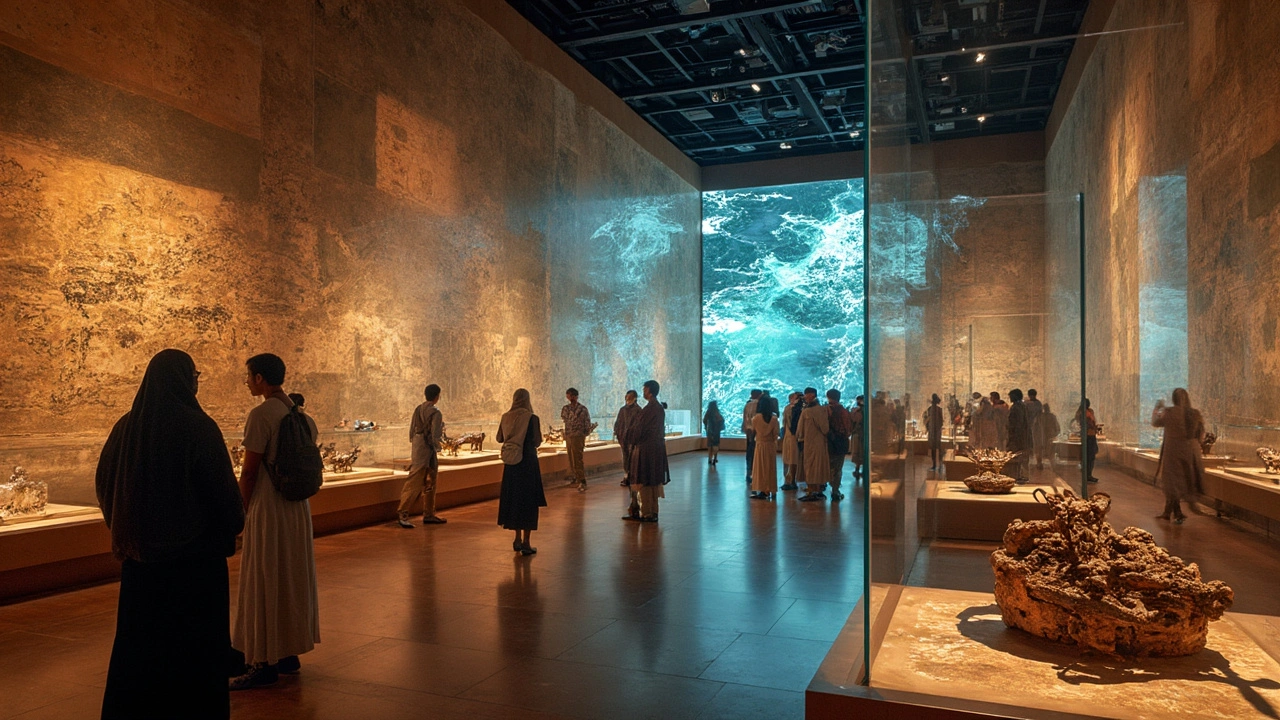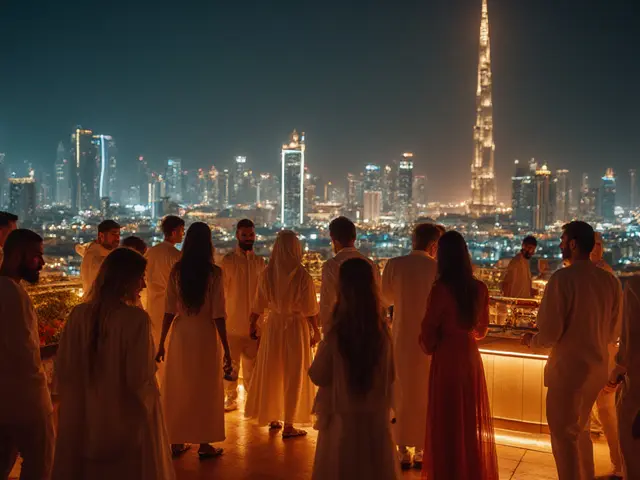
When you think of Dubai, it's easy to picture those jaw-dropping skyscrapers and luxury shopping experiences. But peel back a layer or two, and you’ll find it has a rich tapestry of history just waiting to be explored. Beyond the futuristic facade lie hidden historical gems that can enlighten and inspire, and they're right here in your backyard.
Let's start with the forgotten nomadic side of this bustling metropolis. Long before the Burj Khalifa dominated the skyline, Bedouin tribes roamed these lands, leaving whispers of their history scattered throughout the city. You can catch glimpses of this bygone era at places like the Al Marmoom Desert Conservation Reserve. It's more than just sand dunes; it's a time capsule filled with archaeological treasures and ancient life stories. Next time you’re planning a weekend adventure, why not visit Al Marmoom and let the desert speak for itself?
If you wander to the city's historic heart, you'll hit the Al Fahidi Historical Neighborhood, a delightful contrast to the glitzy urban stretches Dubai is famous for. This area lets you step back in time, with narrow lanes winding through traditional wind-tower architecture. It's a beautifully preserved testament to the city's vibrant past and offers a peaceful retreat from the city's hustle and bustle. Stroll around and you'll feel the city's old soul, hidden but not forgotten.
- Dubai's Nomadic Past: Pre-Skyscraper Era
- The Mysteries of Al Fahidi Historical Neighborhood
- Unveiling Al Marmoom’s Ancient Secrets
- Dubai Museum: Treasures Beyond the Obvious Exhibits
- Tips for Finding Historical Gems
Dubai's Nomadic Past: Pre-Skyscraper Era
Way before Dubai attractions became synonymous with iconic skyscrapers and luxury shopping sprees, the area was home to nomadic Bedouin tribes. These folks lived in harmony with the desert surroundings for centuries. They roamed the landscapes with their camels, following the seasons and water sources. If you think about it, life couldn't have been more different from today's hustle and bustle.
This period wasn't just a blur of sand and tents. The Bedouins were a resourceful bunch. They mastered the art of navigating the vast desert, using stars as their guide—no GPS back then! They relied on their deep knowledge of the land to ensure their survival, leading to rich oral traditions and cultural heritage.
One of the most enduring legacies of this time is the al falaj irrigation system. This ancient technology, channeling groundwater in an ingenious manner, supported both farming and daily life in such an arid region. Imagine how different the story of Dubai would be without this smart adaptation!
To get a sense of what this era might have been like, a visit to the Al Marmoom Desert Conservation Reserve is totally worth your time. Unlike Dubai's bustling city life, the reserve offers a unique peek into a quieter, ancient lifestyle. It’s a reminder that Dubai's heart still beats with the echoes of its Bedouin history, offering us all a chance to explore hidden gems from a world that laid the foundations for the vibrant city we see today.
The Mysteries of Al Fahidi Historical Neighborhood
Right in the bustling heart of Dubai, Al Fahidi Historical Neighborhood offers a tranquil escape to the past. This place is a living museum that captures the essence of the city's history long before the modern shiny skyscrapers took over. Dating back to the early 19th century, it stands as one of the oldest parts of the city, showcasing traditional Emirati architecture with its unique sand-colored buildings and charming wind towers.
As you wander through its narrow lanes, you'll stumble upon something new at every corner. Make sure you visit the Dubai Museum located within Al Fahidi Fort, the oldest existing building in the city. The museum gives you insights into the simple yet intriguing lives of early Dubai residents. It's packed with artifacts and exhibits depicting everything from traditional Bedouin life to the pearl diving era that was once a staple of the UAE's economy.
An interesting fact is that the neighborhood also hosts the annual Sikka Art Fair, one local event you wouldn’t want to miss. This unique fair maximizes the charm of its surroundings by turning this historic area into a vibrant art hub, featuring local artists. It's a perfect blend of old and new, showing that history and modern creativity can coexist beautifully.
Another gem in the area is the Coffee Museum. Not only does it celebrate coffee as a beverage, but it also delves into its culture with displays of antiques and historic roasting techniques. It's a caffeine lover's paradise and it tells a story as rich and layered as a perfect cup.
Al Fahidi Historical Neighborhood isn't just about history; it's also about experiencing authentic Emirati life. The local cafes serve up traditional meals and snacks where you can enjoy a dining experience that's very different from the lavish restaurants in downtown Dubai. Try a cup of Arabic coffee with dates, it’s a must!
If you're looking to dive deeper into the history of Dubai beyond its glamorous surface, spend a day here. It's a chance to slow down, listen to the whispers of the past, and truly appreciate the cultural tapestry of this amazing city.

Unveiling Al Marmoom’s Ancient Secrets
Not far from Dubai’s city center lies a place that seems worlds away—the Al Marmoom Desert Conservation Reserve. This spot isn’t just about breathtaking sunsets or serene desert landscapes; it’s a historical treasure trove with stories reaching back thousands of years.
Al Marmoom offers a unique glimpse into ancient Bedouin life. As you wander through its vast stretches, you'll stumble upon archaeological sites that highlight the rich tapestry of UAE’s history. In fact, some of the oldest artifacts discovered here date back to the Bronze Age. Talk about a time warp, right?
For those keen on tracking these historical marvels, Al Marmoom is home to several archaeological digs and mysterious stone formations. One of the coolest finds here is the ancient prehistoric desert settlements. These digs have unearthed tools and pottery, offering insights into the daily lives of our desert ancestors.
Don't miss out on the Al Marmoom Bedouin Experience. It’s not every day you get to venture into the desert and immerse yourself in Bedouin culture. You can even sit around a traditional campfire, savoring Arabic coffee while listening to desert tales under a sky studded with stars.
To make the most of your trip, consider these quick tips:
- Timing is key: Visit during the cooler months, from October to March, for a more comfortable experience.
- Bring the essentials: You’ll want sunscreen, hats, and plenty of water.
- Guided tours: Opt for a guided tour if you’re looking for a deeper dive into the history and culture of the area.
Whether you're a history buff or just someone looking to escape the city’s fast pace, exploring Al Marmoom’s hidden gems is sure to offer a fresh perspective on Dubai’s rich and vibrant past.
Dubai Museum: Treasures Beyond the Obvious Exhibits
Ditch the usual souvenir shops and head to the Dubai Museum for an authentic peek into the city’s past. Nestled within Al Fahidi Fort, the museum might look unassuming from the outside, but it's packed with hidden treasures that tell Dubai's unique story.
Once you've seen the main exhibits about pearling and early trade routes, don't rush out. There’s a lesser-known section showcasing the transformation from humble beginnings to the dazzling metropolis we recognize today. It’s got these fascinating models that bring old Dubai streets to life. Seriously, you feel like you've been dropped into a different time.
Look further, and you’ll spot the room dedicated to the desert’s role in shaping the Emirate’s culture. It dives into how nomadic tribes went about their daily life, emphasizing the importance of the environment in their survival strategies. For those curious about architecture, don’t skip the section that explains traditional building methods, like the use of coral and gypsum, which were pivotal in creating Dubai's iconic wind-tower structures.
- Don’t miss the glazed pottery collection—each piece tells a story of ancient trade links with faraway lands.
- The ethnographic displays offer insightful details about the daily life of the local tribes.
- Make sure to check out the archaeology wing; it's home to artifacts dating back thousands of years.
Here’s a tip: visit during weekdays to avoid the crowd, and if you want some insider knowledge, sign up for one of their guided tours. The guides often share tidbits you won’t find on the info plaques. Trust me, there’s so much more below the surface if you know where to look.
| Year Established | Main Attractions | Hidden Gems |
|---|---|---|
| 1971 | Pearling History | Desert Life Displays |
| Al Fahidi Fort | Traditional Building Methods |

Tips for Finding Historical Gems
Hunting for hidden historical sites in Dubai can be thrilling if you know where to look. Here are some practical tips to help you uncover these gems without getting stuck in the usual tourist traps.
First off, get chummy with Google Maps and local history forums. Residents and local enthusiasts often mark places on digital maps or chat about them online. This is your digital treasure map to hidden gems that don’t always make it onto the travel brochures.
- Start with Local Guides: There's no better way to find these spots than asking someone who knows the city inside out. Hire a local guide specialized in history tours. They often have insider knowledge about less-known attractions.
- Join a Historical Group: There are clubs and societies in Dubai focused on the city's history. Joining these groups or attending their events can provide firsthand information about historical sites lurking beneath the city's modern layers.
- Visit During Off-Peak Hours: This tip doesn't just apply to famous attractions. Some sites are less crowded at specific times, giving you the space to fully explore. Early mornings or late afternoons are often perfect for a quiet visit.
Every now and then, local universities and museums like the Dubai Museum host tours or lectures that dig deep into Dubai’s past. Keep an eye out for these events. They're not only cheap but also packed with historical riches and insights you won't find elsewhere.
Lastly, don't forget the power of a chat with a long-time resident or a local shopkeeper at a traditional souk. They may have stories and tips passed down through generations—something you won't find online. Sometimes the best tips come from simple conversations.


